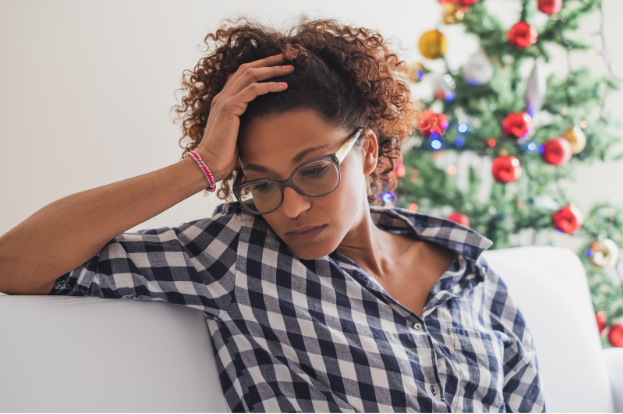
Everyone has experienced anxiety or knows someone who has dealt with anxiety at some point in their lives. It’s an extremely common reaction to things, situations, or events that we’re anticipating in the future, and for the most part, it’s a helpful tool to get us ready and prepared for what’s coming next.
But what happens when that feeling of nervousness or excitement instead turns to a feeling of dread? Or when the event you were looking forward to now makes you feel sweaty, scared, or panicky? The anticipation of something in the future somehow turned into an uncomfortable or maybe even distressing feeling that you just want to stop.
A lot of the time, our instinct is to avoid whatever is causing the anxiety. We avoid the dreaded situation or uncomfortable interaction and magically, we feel so much better. But the next time we think about having to encounter this situation again, suddenly the feeling comes back, and now it’s even stronger. Somehow it feels even worse than the first time. And so our behavior to avoid it becomes more and more desperate and agonized over.
This is called the Cycle of Anxiety. This happens when we choose an avoidance behavior as a response to Anxiety. Though the immediate response is to feel relief when we avoid an anxiety-producing event, the consequence is that the avoidance behavior is reinforced, and the anxiety grows stronger. The next time you encounter the anxiety-producing event, you might feel more intense symptoms like sweating, a racing heart, fear, or panic. If you again choose an avoidance behavior, the anxiety will continue to grow. This may eventually lead to anxiety symptoms becoming so intense that they start disrupting your daily routine.
You may be reading this and are thinking, “I’m already there! What do I do now?”
Don’t worry—breaking the cycle of anxiety is possible. It takes some practice and a little courage, but it is very doable!
Treatment modalities like Cognitive Behavioral Therapy (CBT) and Exposure Therapy are specifically targeted towards helping clients take the steps towards reducing their anxiety symptoms in safe, encouraging, and manageable ways. With these therapies, clients are encouraged to take on the source of their anxiety directly.
When faced head-on, you may realize the anxiety was overinflated, or didn’t turn out to match your catastrophic expectations. The more you repeat this process, the more the anxiety will taper down and your avoidance response will diminish to a manageable and realistic level.

4 Steps to Breaking the Cycle of Anxiety
Step 1: Identify the Anxiety
What is the trigger causing your anxiety? Is it a social event where you won’t know many people? Maybe it’s a general feeling of dread whenever faced with daily tasks (grocery shopping, driving, etc). Sit with the anxiety for a moment and try notice how your body reacts when you think of specific events or situations.
Step 2: Challenge the Anxiety
Anxiety is often exacerbated by irrational thoughts called cognitive distortions (Click here for our blog post on Cognitive Distortions). These distortions lead to faulty thinking in anxiety where we tend to imagine or expect the worst outcome for any situation. What can happen might not be the same as what will happen. Challenge the anxiety by exploring questions like the following below:
- What is the evidence your worry will come true? What is the evidence that it won’t?
- If it doesn’t come true, what might happen instead?
- If it does come true, how could you handle it?
- Will it eventually be okay even if it does come true?
You might find, after answering these questions, that your anxiety may have been inflated or a little unrealistic. Walking through these questions can help to build your confidence to tackle the anxiety head on.
Step 3: Face the Anxiety
This step may be uncomfortable or distressing both physically and emotionally, so it’s important to start small and go slow. This step is all about building your tolerance to the discomfort in a safe and controlled way. Find a smaller aspect of what is triggering your anxiety and expose yourself to it purposefully, repeating this with gradual steps up in exposure. For example: you have social anxiety and are experiencing symptoms when thinking about a party you agreed to attend. A small, safe, and controllable first step would be to pick out your outfit for the event and imagine yourself wearing it there. You were able to tolerate that, so a good next step would be to look up directions for the party. Next, you could drive around the area before the party to get more familiar. With a few more steps, you would eventually face the anxiety inducing party feeling more confident, in control, and calm. You may still feel a little anxious, but you will be more comfortable and less prone to a panic attack or more intense anxiety symptoms.
Step 4: Utilize Coping Skills
This step is essential when paired with Step 3: Face the Anxiety. You may find yourself getting overwhelmed as you try to progress through the exposure steps. You don’t want to stop or give up after exposing yourself to an anxiety trigger, because that would be an avoidance behavior, which will reinforce the avoidance response and increase the anxiety. To get through the discomfort, it’s important to have coping skills that will lower your momentary arousal and bring you back to calm. This can be anything that distracts or grounds you in the moment. Deep breathing exercises and muscle relaxation skills are great tools, and distractions like listening to music or taking a walk can also be helpful. This website has worksheets and more info on Anxiety Coping Skills.

These steps can help you deal with your anxiety better in the moment, and with consistent practice, can reduce anxiety symptoms in the long-term, leaving you free to experience life confidently and worry-free.
Feeling inspired? You can get started breaking the cycle of anxiety by scheduling a free consultation call with one of our trained Atlanta Anxiety therapists here.

